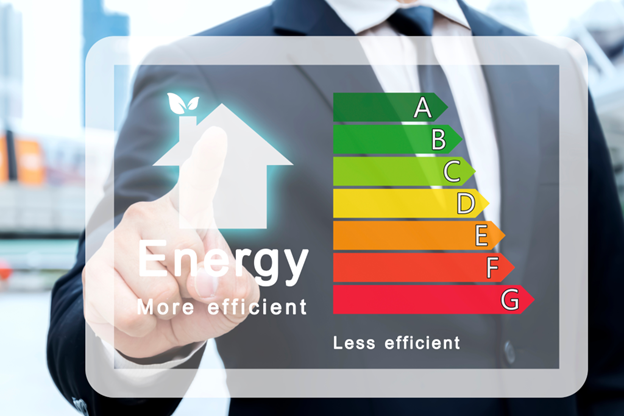How Energy Efficiency Integrates Naturally into Affordable Housing

Because affordable housing is an objective comprised of multiple, dynamic dimensions, it can be easy to let one prominent dimension pull the focus of your PHA, like increasing housing supply. Yet it's helpful to step back and remember that our true objective is affordable living for people.
Other aspects of housing that can affect finances - like transportation, access to jobs, or safety - need attention as much as the act of getting someone into a structure with four walls and a roof. In this vein, we'll segue into one of the less frequently mentioned dimensions of affordable housing: energy efficient housing.
Energy Efficient Housing Is Worth It - For Homeowners & Renters
The phrase "energy efficiency" gets tossed around a lot, but what does it mean? Generally, it refers to the ratio of power input - be that natural gas, electricity, or water - to output. In other words, can you generate the same heat from your stove with less electricity? Can you keep your house cool while running your air conditioner less? Can your dishwasher and washing machine clean just as well with less water?
You may be thinking: "These are concerns for homeowners, not renters of affordable housing!" However, consider our first assertion in this article: if housing is truly going to be affordable, that includes costs outside of rent, and utilities are a huge factor there.
In fact, renters likely struggle more to pay for utilities in general - meaning that they could more palpably feel a reduction in utility costs, leading to exponential benefits in how they disperse limited funds.
In concrete terms, a renter who goes from paying $140 per month to $70 per month for electricity can funnel that $70 many other places: groceries, fitness pursuits, doctor's appointments, commute, education... Every dollar counts.
Developers of affordable housing also stand to benefit from making their buildings more efficient - especially because some units include utilities as part of rent - meaning landlord profit margins directly depend on utility costs.
Another factor is quality of life. If a more efficient washer/dryer, HVAC, or insulation system makes life more comfortable, safe, and healthy for residents in a building, that is worthwhile even if costs remain the same. Moreover, savvy developers realize that tenant satisfaction also saves costs in the long run, because frequent turnover leads to more empty units more often, resulting in thousands of dollars lost per year.
Given all these persuasive reasons to pursue energy efficient housing, what does it look like?
Windows, Insulation, Walls, Roofing
The materials that make up a home play a large part in its ability to regulate temperature, a major factor in both comfort and cost.
Some of these are much easier to address in initial construction, like effective insulation in walls. It is worth spending extra - and seeking financial support for these improved construction techniques if cost is a worry - in the long run.
To answer the higher up-front costs of building better-insulates structures, some innovators are working to develop new construction materials that are both effective and inexpensive. Some materials currently being explored are ceramics, plant-based foam, recycled steel, concrete, and conglomerate panels made of more traditional building materials, like plywood and strand board. It would behoove PHAs and public housing developers to stay abreast of these innovations.
Other improvements can be accomplished over time. Building owners should strive to replace old and/or single-paned windows with newer windows that sport thicker-paned glass and better all-around seals. This prevents cool or warm air from leaking out, depending on the season.
If fully replacing windows is not in the budget for a few years, you can add caulk or weather-stripping to windows to reduce leakage. You can also try glazing windows, adding a solar film, or simply constructing some awnings for shade - all of these provide extra protection from the sun with the perk of additional privacy.
If you live in a particularly hot climate like Florida, it is also worth looking into cool roofing. This type of roofing reflects heat back into the atmosphere rather than absorbing it. Initially, the creators of cool roofing based their technique on the color of the roofing; they noticed that darker roofs absorbed the sun's rays much like dark clothing makes a person warmer. Currently, they offer a wider range of colors in materials that can still reflect heat.
HVAC Systems
Branching from the topic of containing temperature-controlled air, some HVAC systems use significantly less energy as well:
- Air-source heat pumps
- Ducted heat pumps
- Ductless mini-split heat pumps
You should consult with an HVAC expert at the time of installation or replacement. They will help you understand Energy Star Ratings and other factors in energy usage.
This is another system that can be addressed in the initial stages of building - but housing developers may want to consider upgrades to their current buildings, too. This can help save on maintenance costs, and the reduced utility bills will help increase tenant satisfaction and retention in the long run.
Appliances & Simple Switches
Appliances are another part of the home that can be changed piecemeal as funds open up. Toilets are actually quite a large consumer of water. They can be placed with low-flow or other water-saving designs. Simply updating an older toilet - which can use up to 5 gallons per flush - to a more modern one that is not particularly ecological can make a big difference.
If you want to go farther than that, the EPA has a WaterSense label on certain toilets that pass those standards. Some showerheads also bear this label, and they can easily be replaced to save water with each shower - according to the EPA, about 2700 gallons per year.
Light bulbs are another small, simple feature to change, and they are an easy way for residents to take control of their energy savings. LED lights and newer bulbs generally use a fraction of the energy of old bulbs.
Next, think about the large appliances in the home. Updating the refrigerator, dishwasher, washer/dryer, and other appliances available on the ENERGY Star list can save residents and landlords money down the line, with fewer maintenance trips and lowered utility bills.
Government Support for Efficiency Improvements
What if you are a lower income homeowner? How can you pay for energy efficient housing updates? While it certainly does not cover every single program out there, Energy.gov's Financing and Incentives page is a treasure trove of "Rebates, Tax Credits, and Savings Programs," as its main title boasts, for those making improvements.
Here are just a few of the helpful links that you will find on that page-though we highly recommend going there yourself and clicking through any that might pertain to you:
- Making Our Homes More Efficient: Clean Energy Tax Credits for Consumers
- Federal Income Tax Credits and Incentives for Energy Efficiency
- Database of State Incentives for Renewables and Efficiency
- Low Income Home Energy Assistance Program
- Energy-efficient Financing
- Energy-Efficient Mortgages
- How to Apply for Weatherization Assistance
Again, this is just a sample. A few quick Google searches will likely net all kinds of ways to potentially save money on energy efficiency improvements at the national, state, and local levels.
Energy Efficient Housing: A Bit More Money Now for Years of Savings
Ultimately, the largest takeaway here is: making affordable housing more energy efficient is a long-term cost savings, both for developers and the people who live in those properties. You should not assume that you cannot afford the short-term expense of energy efficient materials, because there are all kinds of programs out there to help. Federal, state, and local support is available for those willing to ask.



